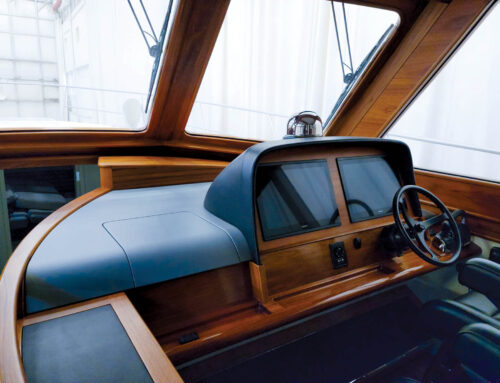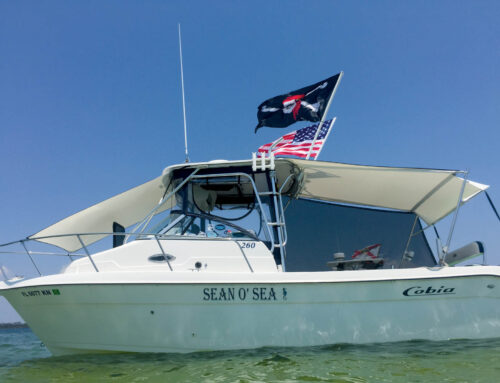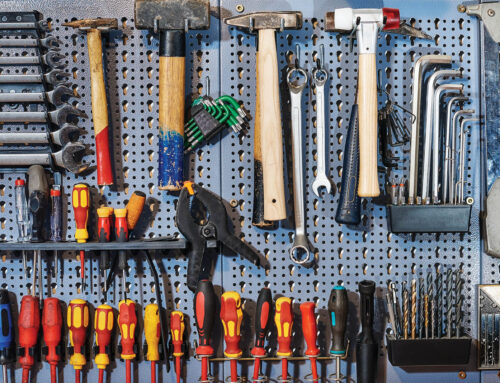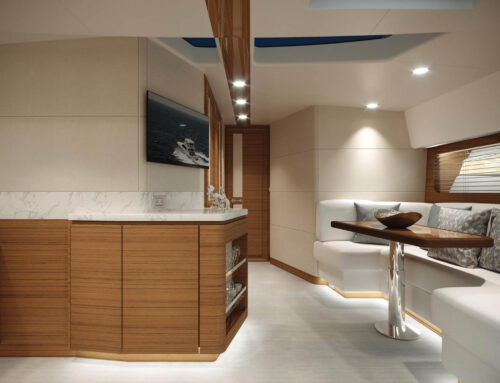Elevate your canvas skills
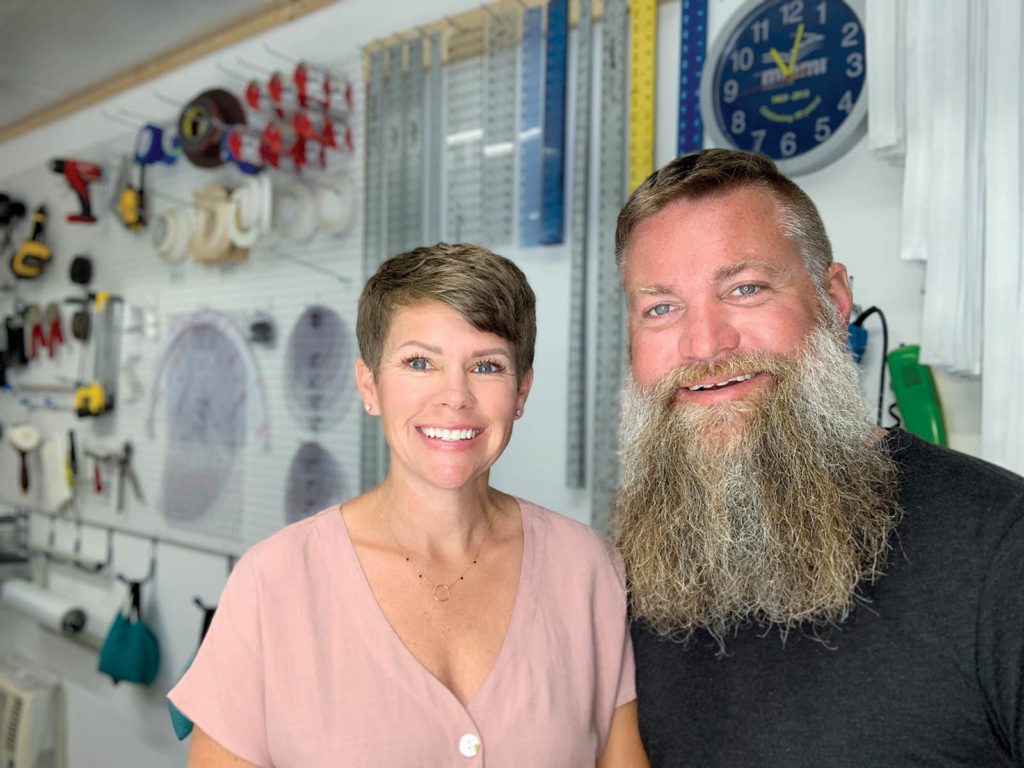
Think outside the box.
By Mike Charlton
At Charlton’s Marine Canvas in Yorktown, Va., my wife, Rachel Charlton, and I are a two-person team, and we wouldn’t have it any other way. In our shop, we like to think of our work as creative art projects rather than products. Every project is different. This mindset helps us stay focused on creating new, creative ways to fabricate outside the box. We have a strong passion for creating marine canvas. We strive to push the limits with what can be done with every project. We believe that in our industry, we need to be consistently thinking of how to improve and change the way we fabricate to help ourselves and other fabricators grow creatively and take their skills to the next level.
Three keys to quality
I believe there are three major keys to creating quality canvas. These key points have no bearing on having a successful business. You can have a successful business and still produce low-quality work. There is a large market for inexpensive lesser-quality canvas. These three keys are designed to help elevate the quality of your canvas to a much higher level. If applied properly, they can make a significant difference in the quality of the canvas you fabricate.
Key #1: Quality. Canvas needs to be fabricated with quality materials that will last the true test of time. Fabric choice is crucial. You need to make sure you choose the correct fabric for the correct project. The construction technique and how it is stitched needs to be carefully thought out for durability and strength.
Key #2: Functionality. Canvas needs to function properly, and this can vary due to each customer’s needs. Some functionality basics include:
- Ease of installation. It needs to install and uninstall easily with no struggle.
- Zippers. Doorway zippers and U-zippers need to be easily accessible and fold or roll up easily. Lanyards are a great way to make zippers easier for customers to use.
- Visibility. A clear view is a big factor for customers. Ensure there are minimal obstructions to their view.
Key #3: Aesthetics. Canvas needs to be aesthetically pleasing or, as I like to say, Sexy. The canvas needs to be smooth, flat and the lines need to flow and complement the lines of the boat. Stitching needs to be straight, and back tacks need to be clean.
No rules except fun
Beyond these three basic keys, there are no rules to follow. Just because everyone else does it that way, or it’s been done that way for years, doesn’t mean you have to do it that way. It also doesn’t mean that it’s the right way to do it. Keep your mind open to new things and let your imagination run wild. Always remember to have fun—that’s the most important part. Make sure your schedule is comfortable and you’re not rushing to get every job done. Otherwise, you won’t have any time to improve and take your work to the next level. You need to have time at the end of every project to stand back and look at what you can improve on. Then come up with a plan or a solution to do just that. When you have an issue or are struggling with a portion of a project, take the time to find the answer or solution immediately. Doing so will allow you to grow your quality more quickly and move on to the next area for improvement.
At Charlton’s Marine Canvas, our ultimate goal is to be happy with what we do, have happy customers and support our family while doing it. I hope the advice and techniques I offer here can influence a new mindset to help you think outside the box.
Michael and Rachel Charlton are the owners of Charlton’s Marine Canvas in Yorktown, Va. They have been in business for four years, and their main goal is to provide high-end, award-winning canvas for their customers. They have a strong passion for boating and being on the water with their daughters, Mersades and Nikki Charlton.
SIDEBAR: Problem-solving tricks and techniques
Pipe cutouts
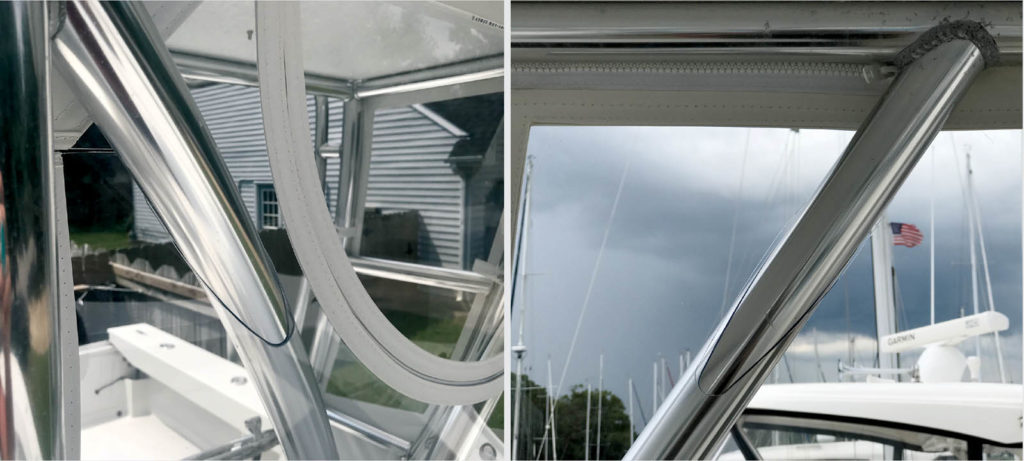
These photos show how I make cutouts in polycarbonate for pipes that need to shoot through an enclosure. There is no need for fabric borders in these areas, and as you can see, it makes for a clean and sexy look. It looks like the pipe magically shoots through the glass. This takes very careful planning and precise patterning to make sure the panels line up perfectly and there are no large gaps.
Hidden fasteners
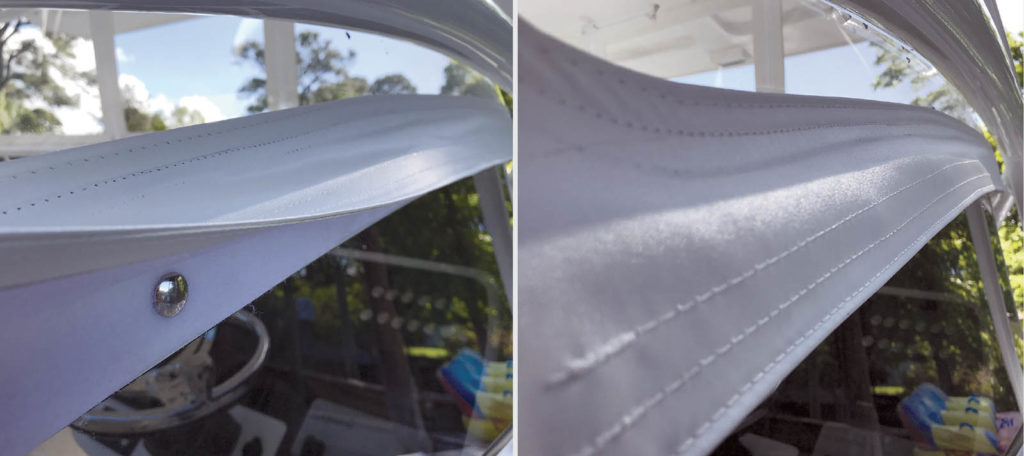
Fasteners are an eyesore, not a decorative part of the canvas. So why do we want to see them? These photos show the before and after of how I sew a flap to the inside of the panel for fasteners to be installed in. This allows the fasteners to be hidden from the outside and for the enclosure to blend in with the boat, creating a much cleaner look. The flap eliminates the wrinkles that the fasteners themselves can create. It disperses the pull throughout the flap so the panel itself stays flat. Most of the time the existing fasteners are installed in the wrong spot, and there is no method to the madness of where they are placed. I don’t believe in following the mistakes that were made before me. Installing an additional flap for the fasteners allows you to use the existing fasteners, if placed correctly, or to add additional fasteners wherever you would like. Random fastener placement is no longer an issue because they will not be seen.
Panel support
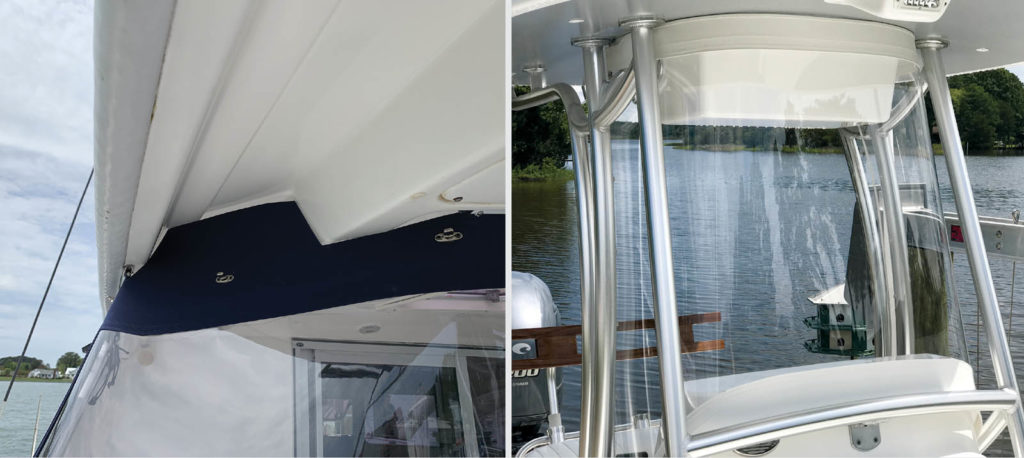
These photos show you where I have sewn polycarbonate inside the panel.
The photo on the left shows how I support an area at the top of the panel where it would be tricky to add fasteners. The polycarbonate makes the fabric rigid so it stays in place without falling or sagging. This technique can be used almost anywhere in a panel.
The photo on the right shows how the glass extends throughout the entire panel at the top and bottom, keeping the material permanently flat and smooth. All applications end up with a much cleaner and sexier look.
Banded tops
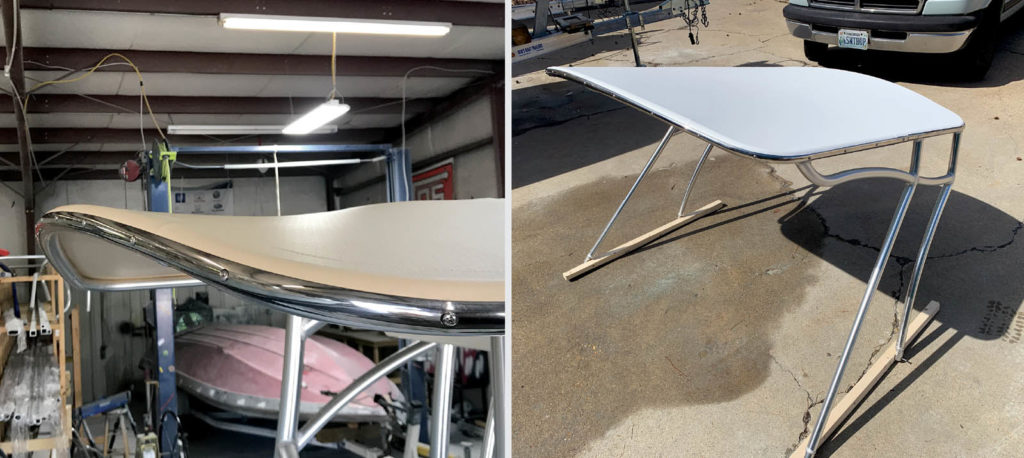
Banded tops are a great way of taking quality to the next level. They are light-years ahead of lace-on tops, and I stay away from lace tops at all costs. In many ways, banded tops completely seal up the top, so if you were to add an enclosure, you don’t have grommet holes for water to run through. The lacing usually gets dirty very quickly and is an eyesore. Banded tops can be mistaken for a hardtop, and their aesthetics alone can take the boat to another level of elegance. Banded tops take longer to install, but the end result is very rewarding and worth the extra work. I haven’t had a customer yet turn down the extra cost after they have seen the difference. It’s a win-win-win situation. Your shop will be producing a higher-end product, you get to charge more for the product, and your customer will definitely be happier with a banded top over a lace-on top.
 TEXTILES.ORG
TEXTILES.ORG 


